Kousa (Stuffed Squash)
Updated May 14, 2022
This authentic Kousa recipe is a popular Middle Eastern dish made with a spiced beef & rice mixture stuffed in squash and cooked in a garlicky tomato broth!
This post may contain affiliate links. Please read our disclosure policy.
Kousa is a traditional Lebanese recipe that I grew up eating! It’s one of those labor of love meals that requires coring squash, making a stuffing, stuffing it in the squash and then cooking it all together. However, it only uses a handful of ingredients, and the result is a tender squash filled with delicious juicy meat and rice in a rich broth.
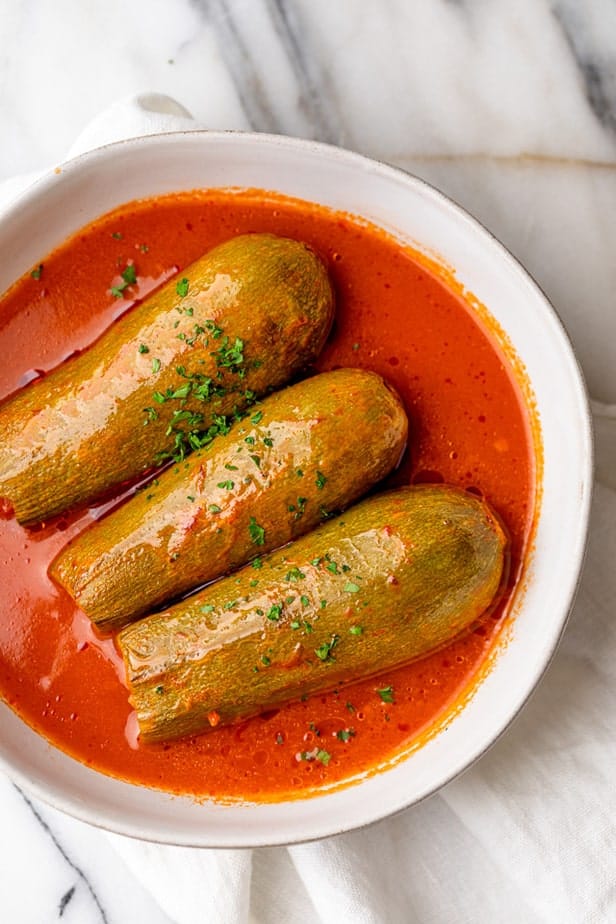
What is kousa
Kousa is another name for squash or zucchini in Arabic. They’re often called Mexican Squash, Mexican Zucchini or Grey Zucchini. Their shape – short and wide – is ideal for stuffing. So this Lebanese Kousa recipe is essentially spiced ground beef with rice stuffed in the kousa and cooked in a garlicky tomato broth.
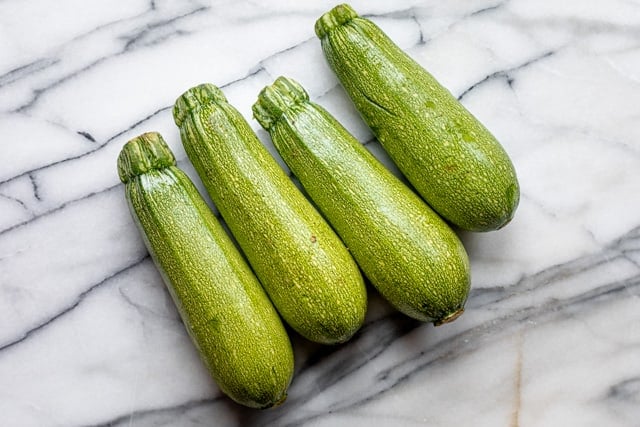
WATCH ME & A FRIEND MAKE KOUSA 2 WAYS
How to make kousa
Core the squash
Cut off the stalks of the squash, then slice off the dried tips at the opposite end. You want to be careful not to remove too much of the squash while doing this. This is also a good time to wash the squash thoroughly and dry them.
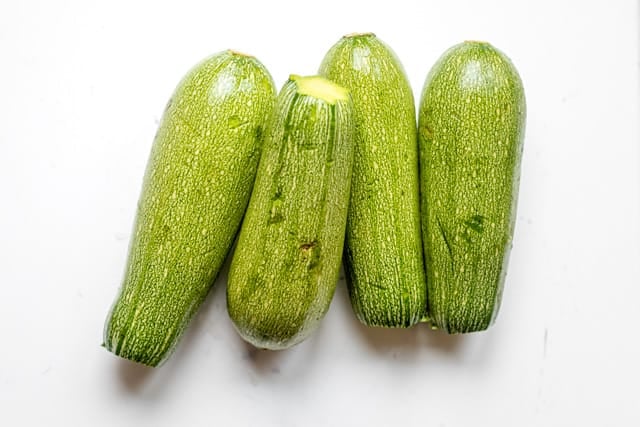
To core the squash, I found the best technique is to use an apple corer. Once you remove the major core of the squash, you can clean out more of the sides with a knife or again with the apple corer. You can remove as much or as little as you want. Just be careful not to cut through the tender skin of the squash.
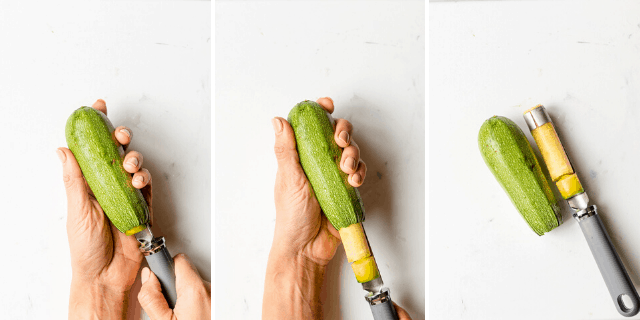
Make the stuffing
The stuffing is a classic beef hashweh (Arabic word for stuffing) that we use in many dishes like stuffed grape leaves. Cook ground beef with olive oil, spices and onions (optional), then add uncooked rice and stir to combine. Some prefer not to cook the stuffing, but I prefer cooking it for best flavor. Don’t cook the rice though because it will cook in the broth afterwards.
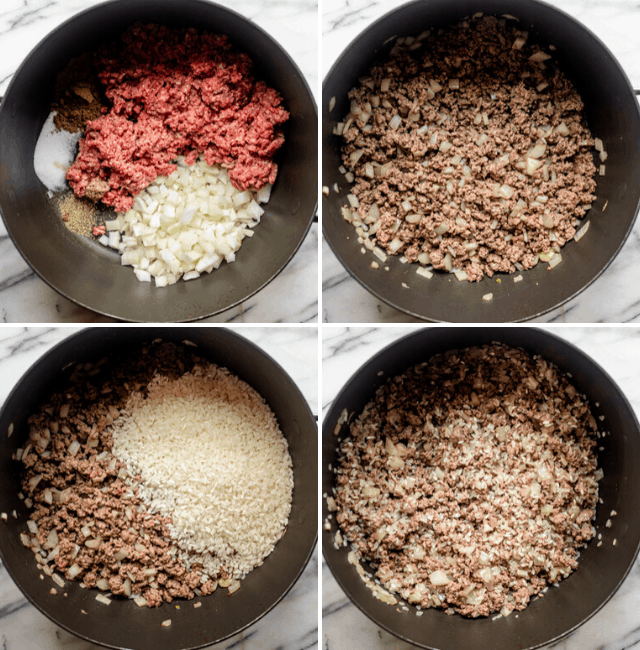
Stuff the squash
Now, it’s time to place the stuffing into the hallowed out kousa. Be sure not to overstuff them because the rice will expand as it’s cooked. While this is not necessary, I recommend adding a small tomato wedge to help seal the squash. It creates an edible barrier to keep the rice and beef mixture inside the kousa when it’s cooking.
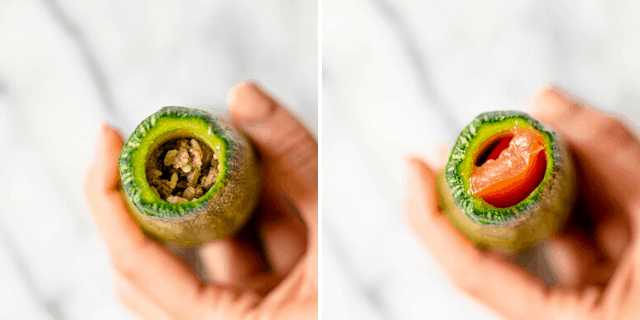
Cook the kousa in tomato broth
After you’re done stuffing the rice and beef mixture into the kousa, it’s time to cook it in a tomato broth. There are many ways to create a tomato broth. I make mine with olive oil, tomato paste, garlic, chicken broth, salt and pepper. Make enough to just barely cover the stuffed squash in the pot. And make sure the consistency of broth is not too thick since it will thicken as it cooks.
Since I don’t have a pressure cooker, I use a small round plate to keep kousa intact in the 8-quart deep pot while it’s cooking. After about 45 minutes to an hour, the broth will reduce, the squash color will darken and the stuffing will become tender.
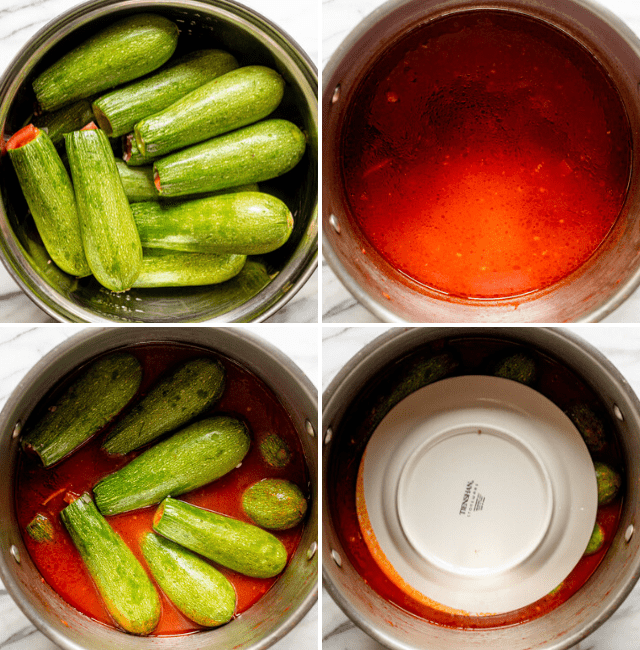
Tips for making kousa
- Reserve the squash flesh for another purpose. That part is completely edible and tasty. You can use it to make an omelette, frittata or even babaganoush!
- Keep the kousa extra firm when cooking by washing it with salted water. You can fill a medium bowl with water and add about 1 teaspoon of salt and then scrub the squash with your hands.
- Seal the stuffed squash with small wedges of tomatoes. This is not necessary and many cooks don’t take the time to do this step. However, I found it’s really useful for keeping the stuffing inside the squash instead of spilling into the broth.
- Swap the rice for riced cauliflower for a lower carb version. I recently tried it with cauliflower rice and it works really well this way. If you’re using cauliflower rice instead of regular rice, you can stuff them all the way since the there won’t be any rice expansion.
Frequently asked questions
Where can I find kousa?
It’s usually available in the winter months in local markets in Michigan and it’s often called Mexican Squash so you can ask your local grocer about it where you live. If you can’t find kousa, try using yellow summer squash, which will be the closest to it.
What’s the best tool for coring kousa?
I found that an apple corer (Amazon Affiliate link) works really well to remove the flesh inside the squash for stuffing purposes. It works really well with one motion. But you may need to core a couple times depending on the thickness of the squash. To get it extra hallowed, you can also use an electric veggie corer drill (Amazon Affiliate link).
Can you freeze kousa?
You can freeze the hallowed out kousa if you buy it in bulk when it’s seasonal. It makes it really tender when cooked. You can also freeze the hashweh stuffing on its own. Or alternatively, you can freeze the cooked stuffed kousa after it’s been cooled. Whatever option you choose, enjoy it within 3 months of freezing for best results.
Can you make the stuffing vegetarian?
Yes, the vegetarian stuffing would be uncooked rice, parsley, tomatoes, green onions and green peppers. It’s basically the same stuffing that I use when I make my vegetarian stuffed grape leaves.
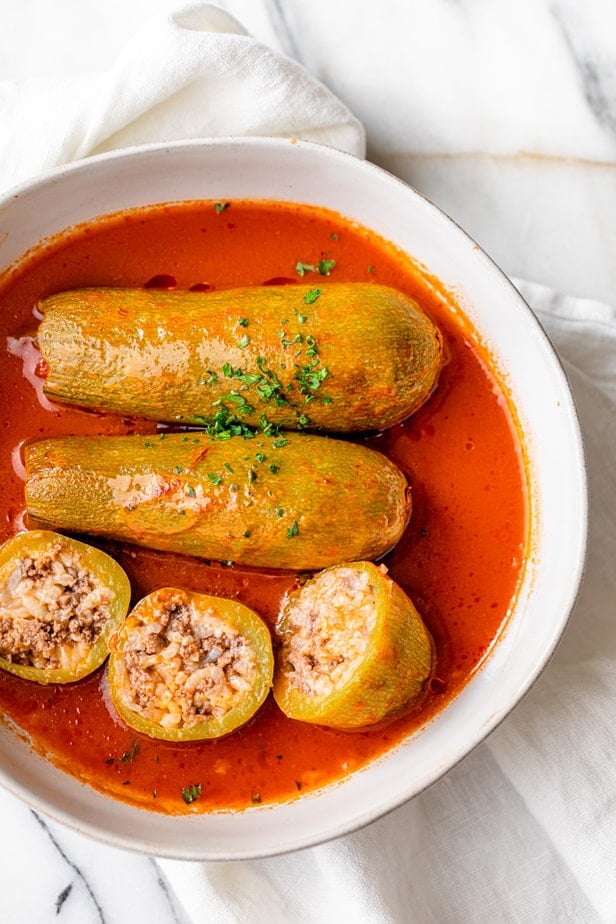
For more Mediterranean food:
Lebanese stuffed squash is one of those great recipes that I grew up having and I love sharing it with you. It’s one of those dishes that we cook on weekends when the whole family gathers together. It’s healthy, hearty and well-balanced while bursting with great Mediterranean flavor. I hope you try it and love it!
If you’ve tried this healthy-ish feelgood Kousa recipe or any other recipe on Feel Good Foodie, then don’t forget to rate the recipe and leave me a comment below! I would love to hear about your experience making it. And if you snapped some shots of it, share it with me on Instagram so I can repost on my stories!

Kousa (Stuffed Squash)
Ingredients
- 16 Mexican squash
- 1 tablespoon olive oil
- 1 small onion chopped
- 1 pound ground beef
- 1 teaspoon 7 Spice
- 2 teaspoons salt divided
- ¼ teaspoon black pepper
- 1 ½ cups short grain white rice
- 1 large tomato cut into 16 chunks
Tomato Broth
- 3 tablespoons olive oil
- 1 cup tomato paste
- 1 teaspoon salt
- ½ teaspoon black pepper
- 6 garlic cloves pressed
- 8 cup chicken broth low sodium
Instructions
- Cut off the stalks of the Mexican squash, then slice off the dried tips at the opposite end without removing too much of the squash.
- Using a knife or apple corer, carefully hallow out the squash and remove the flesh without puncturing the outside of the squash. You can reserve the flesh for another recipe.
- Heat the olive oil in a large pan on medium heat large. Add the onions and ground beef and season with 7 Spice, 1 teaspoon salt and pepper. Cook until the beef is browned, about 7-10 minutes. Add the uncooked rice, the remaining salt and stir to combine the ingredients.
- To make the tomato broth, heat the olive oil in a large deep pot over medium. Add the tomato paste and pressed garlic and season with salt and pepper. Cook until the mixture becomes fragrant, about 1 minute. Add the chicken broth and bring mixture to a boil. Lower heat to a simmer, while stuffing the squash.
- Using a small spoon or your hands, fill the hallowed out inside of each squash with the rice stuffing. Be sure to leave about ¼ inch of empty space at the top since the rice will expand when cooked. Then stuff a tomato chunk on top to seal the squash and prevent the stuffing from coming out when cooked. Repeat with the remaining squash. If you have any leftover stuffing, you can cook it with water.
- Transfer the stuffed squash to the deep pot and bring mixture to a boil, then lower the heat to medium and cook covered for 45 minutes. Uncover the pot, reduce the heat to low and continue cooking until the kousa is knife tender and the sauce thickens, 30-45 minutes.
- Serve the stuffed squash warm with the sauce on top.
Notes
Nutrition
Nutrition information provided is an estimate. It will vary based on cooking method and specific ingredients used.






Comments
Due to time constraints, I had to modify this recipe, making a “deconstructed” version. Cooked the meat as prescribed. Cooked the rice separately. Cooked the tomato sauce as prescribed, adding cubed zucchini. Mixed everything together to serve, adding a blend of chopped fresh cilantro, mint, and parsley. Delicious! I’ve added this site to my bookmarks!
Yum, that sounds so good! So glad you enjoyed!! Thanks!
I’m Lebanese and love this recipe
Yay, so glad you love it!! Thank you, Lynn!
See All Comments